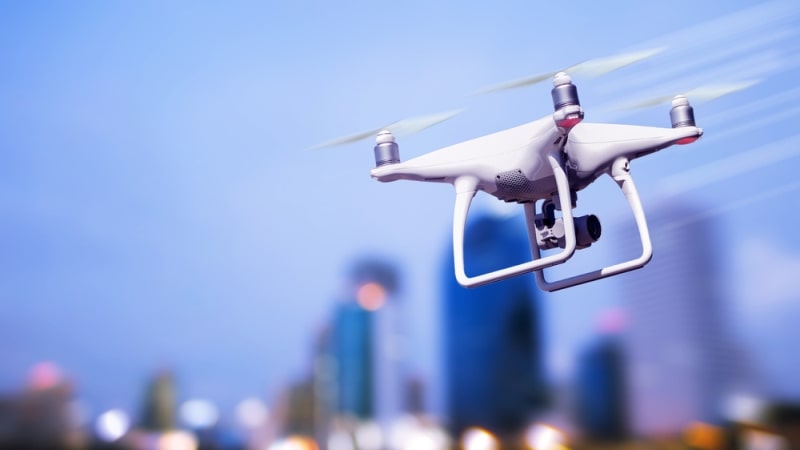
Small drones have been a useful tool to the military for years, primarily as a way to provide on-the-spot surveillance. But as hardware and artificial intelligence guidance systems continue to improve, macro- and nano-drones are poised to begin playing a bigger role in contested areas as both friend and foe.
The Department of Defense for the past several years has been working on a full range of methods to put small unmanned aerial vehicles (UAVs) to use, from tiny “personal surveillance drones” that weigh just over an ounce and can be clipped onto a soldier’s belt, to models that imitate hawks and insects. And the biggest focus is on small UAVs that can act on their own, whether individually or in swarms that demonstrate a hive mentality, sharing information and working together cohesively during a mission.
The Defense Advanced Research Projects Agency’s (DARPA) Fast Lightweight Autonomy (FLA) program, for example, used algorithms to pilot quadcopters quickly–at about 45 mph–through a cluttered obstacle course of buildings and other obstructions. The quadcopters started with basic information–say, a photo of their target, a general idea of the direction and distance to the target, and maybe a map–and their sensors and algorithms figured out the rest. The research agency’s Gremlins program would launch groups of small, low-cost, reusable drones from a plane such as a C-130, then retrieve them after the mission.
The Army Research Laboratory (ARL) just signed a five-year cooperative research and development agreement (CRADA) with Bell Helicopter. As with DoD’s other programs, the goal is to give UAVs greater autonomy while working as part of a human-machine team, under the command of human forces. “Together, we want to enhance technologies for the soldiers–that’s what makes it the absolute perfect collaboration,” said John Hrynuk, a mechanical engineer in ARL’s Vehicle Technology Directorate.
The DoD demonstrated its largest drone swarm toward the end of 2016, when it dropped 103 Perdix micro-drones–each about 6.5 inches long with a wingspan of almost a foot–from three F/A-18 Super Hornets. In the test conducted at China Lake, Calif., the drone swarm demonstrated collective decision-making, adaptive formation flying, and self-healing, according to the DoD. That swarm-like behavior was generated by artificial intelligence, which holds forth the possibility of robotics systems–whether in the air, on land, or at sea–operating in the most dangerous areas as part of a team with military forces. DARPA’s OFFensive Swarm-Enabled Tactics (OFFSET) program is developing similar technology.
But like any technology, the capabilities of small drones can cut both ways. The DoD doesn’t have any kind of monopoly on small drones, which are fairly inexpensive and widely available. More than a million micro drones are registered with the Federal Aviation Administration in the United States alone, and are also common overseas–particularly, as far as the DoD is concerned, in combat areas, where they pose a sometimes undetectable threat to U.S. troops. Adversaries can use small UAVs for surveillance, targeting, or even as “flying IEDs.” And artificial intelligence is being applied to small commercial drones, which could put them into the hands of any adversary.
Small UAVs can evade current radar systems, because of their size, low-altitude flight paths, and their wide variations in shapes, Juanita Christensen, executive director of the Army Aviation and Missile Research, Development and Engineering Command (ARMDEC), said last month in Washington. They also fly slowly, like a bird, and don’t produce much sound, heat, or other detectable signals. And even when they come into visual range, U.S. forces might not know whether the drones are friend or foe.
In addition to developing its own small drone capabilities, DoD has been researching ways to defeat them. The Army Research, Development, and Engineering Command (RDECOM) has established a Community of Practice to focus on countering the threat of small UAVs, working with ARL and others. The Air Force last year spent $2.5 million on 100 five-pound handheld Dronebuster devices to jam enemy drone signals, and is working with industry to develop laser and microwave-based measures to counter enemy UAVs.
But in light of the advances in AI and other drone-related technologies, a report this year commissioned by the Army stressed the importance of the military accelerating its counter-measure research and development efforts.
